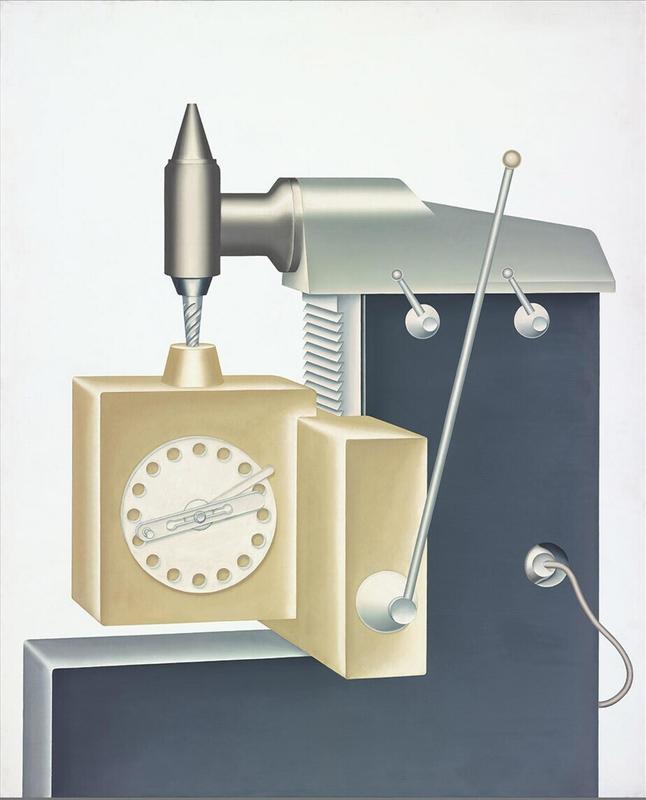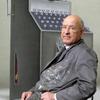More about Voracious Time

Contributor
The surreal majesty of Die gefrässige Zeit (Ravenous or Insatiable Time) reinforces Klapheck's role as a living legend, a survivor.
Klapheck wasn't ethnically targeted by the fascists of his native Germany, but, the way he tells it, his father was a real Indiana Jones type of character: maybe not as handsome as Harrison Ford, but just as defiant, brave and jocular in the face of tyranny. Klapheck is the only child of two academic art historians, Richard Klapheck and Anna Strümpell. On a strange day in the chaotic early 1930s, Klapheck's father began to receive a different greeting in the hallways of the university. Instead of "What's shakin', Rich," everyone started saying "Heil Hitler" to him. Richard had a quick comeback: "Heil düren," he'd retort. The word "Heil" means "long live" as a way of praising a leader, but it also means "to heal," so Heil düren means, may that sick man heal. They fired Richard soon afterwards for "lack of national spirit" (i. e., not joining in the führer worship) the year before Strümpell gave birth.
By his little pun, Richard was saying, "I know this is 1933, but I don't have to agree with you just because we're both Germans." In a similar way, his son's focus on puzzling, Magritte-esque portraits of the details of modern machinery, as in Die gefrässige Zeit, turns our attention away from German technology as a product of fascism. Instead, technology embodies things like the "spiritual world," as Klapheck puts it, and all of the submerged, esoteric associations of surrealism. "With the help of the machine," he says, "I could summon emotional and spiritual things that were previously unknown to me, forcing me to reveal my most secret wishes and thoughts."
In 1968, the art exhibition documenta 4 in Kassel featured Die gefrässige Zeit alongside works by Marisol Escobar, Louise Nevelson, Menashe Kadishman, and Victor Vasarely. This work appears in a 1971 black-and-white photo by Lothar Wolleh. In 1972, Klapheck donated the painting to the Boijmans, and in 1974 they held a retrospective on him.
Sources
- "1968 Konrad Klapheck: Die gefräßige Zeit." Dirk Schwarze, Feb. 12, 2009, http://dirkschwarze.net/2009/02/12/magie-der-maschine/.
- "1995.239.1.30." Harvard Art Museums, https://www.harvardartmuseums.org/art/92583.
- Arnold, Werner. The painter's book of the 20th century: the artist book collection of the Herzog August Bibliothek Wolfenbüttel. Wiesbaden: Harrassowitz Verlag, 2004.
- "Die gefräßige Zeit." BildIndex, https://www.bildindex.de/document/obj20050585?part=0&medium=.
- Hahn, Alois. Körper und Gedächtnis. Wiesbaden: Springer VS, 2010.
- Heftrig, Ruth. Fanatiker der Sachlichkeit: Richard Hamann und die Rezeption der Moderne in der universitären deutschen Kunstgeschichte 1930-1960. Berlin: Walter de Gruyter GmbH & Co KG, 2014.
- Schneidler, Herbert, and Sabine Schütz. Museum Morsbroich: Malerei, Plastik, Objekte, 1985, Band 1. Leverkusen: Städtisches Museum, 1985.












I really appreciate this art piece & the different shades grey that were used. I also really like the the gold that was used.